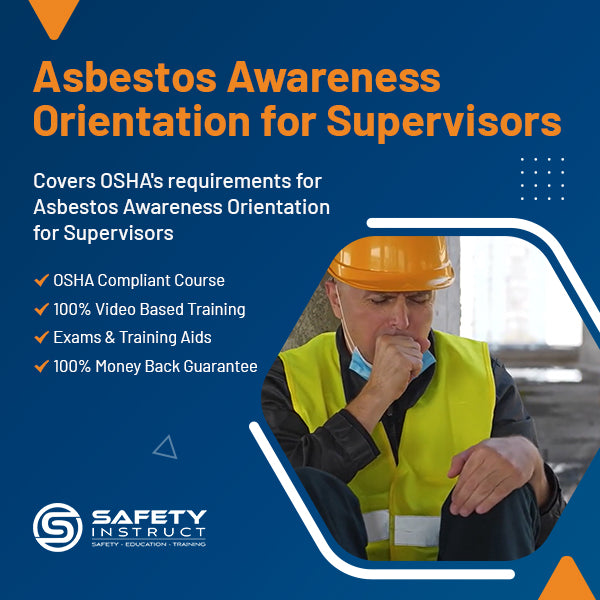No Products in the Cart
Click Here to Schedule a FREE Consultation
Phone: 866-943-6887 Email: sales@safetyinstruct.com



One of the most common products you can encounter, not only in your workplace, but also at home, is Asbestos. Asbestos is the name given to a group of naturally occurring minerals that are resistant to heat and corrosion. It has been used in products, such as insulation for pipes (steam lines for example), floor tiles, building materials, and in vehicle brakes and clutches. Asbestos is composed of the following types of mineral fibers: chrysotile, amosite, crocidolite, tremolite, anthophyllite, and actinolite. These mineral fibers are then put through a chemical process to produce the Asbestos we know today.
What is Asbestos?
Asbestos is the name given to six minerals that occur naturally in the environment as bundles of fibers that can be separated into thin, durable threads for use in commercial and industrial applications. These fibers are resistant to heat, fire, and chemicals and do not conduct electricity. For these reasons, asbestos has been used widely over the course of many decades and in many industries. Additionally, asbestos-like minerals are found in the natural environment, including the mineral erionite.
Asbestos Hazards
Asbestos is the generic term for a group of naturally occurring fibrous minerals with high tensile strength, flexibility, and resistance to thermal, chemical, and electrical conditions. Despite a reduction in the use of asbestos in recent years, everyone is exposed to asbestos at some point during their life. Low levels of asbestos are present in the air, water, and soil. However, most people do not become ill from their exposure. People who become ill from asbestos are usually those who are exposed on a regular basis, most often in a job where they work directly with the material or through substantial environmental contact.
Asbestos Training
Because asbestos can be so hazardous, employees working with or around asbestos must be trained on how to protect themselves and handle it safely. The level of training depends on the type of work they perform.
Exposure Prevention & Protection
Controlling exposure to asbestos can be achieved through administrative actions, engineering controls, and personal protective equipment (PPE). Administrative actions include tasks such as ensuring assessment and oversight by a competent person, limiting the worker's exposure time, and providing showers. Engineering controls can include such things as isolating the exposure source and ensuring ventilation systems are secured. Personal protective equipment includes wearing the proper respiratory protection and associated protective clothing. Utilizing each of these control measures is critical to preventing and protecting against short- and long-term exposure to Asbestos.


